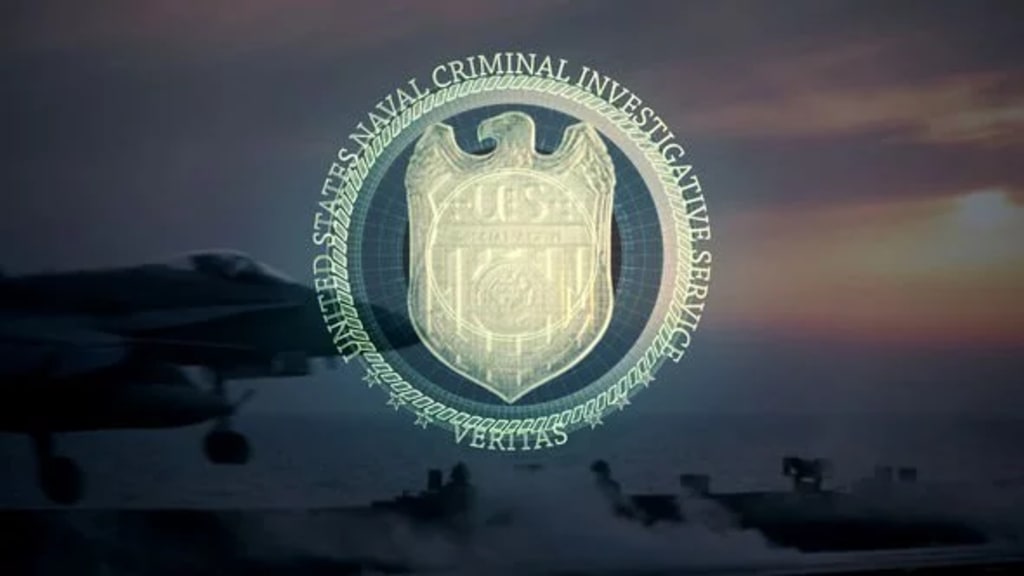NCIS: Cold Case Files
Cpl. Robert "Bobby Dan" Corriveau

*Disclaimer This is a real cold case file that has remained unsolved for over 50 years. *
I feel I must start this story with a bit of background on NCIS, for a few reasons, to help with understanding where NCIS came from and how it came to be, and how they are linked to cold case homicides.
NCIS has an amazing history starting all the way back in 1882 in the Navy Department General order 292 signed by then Secretary of the Navy William H. Hunt. In the beginning it was created to be OnI, Office of Naval Intelligence, they were tasked with collecting information on foreign weapons and vessels, charting waters including rivers and touring shipyards, plants and anything else the navy was interested or involved in outside the US. World War 1 gave OnI a few more interesting responsibilities including but not limited to espionage, sabotage and gathering intel on current and potential enemies. By 1916 the first branch office for a small undercover unit was created in New York City, because all the good things start in New York. Many of the operatives were reserved military and civilians, the latter serving voluntarily without pay. After the World War there was no need for the undercover Op as most people in the US wanted to go about their lives as before the war. In 1926 a volunteer group of reserve intelligence officers was established in case there was a threat to Naval intelligence and national security. By the 1930s we get the first paid civilian employed in Washington D.C as well as a small group of civilian special agents under him that were placed throughout Naval districts, however they only numbered 14 people by September 1937. June of the year 1939, President Theodore Roosevelt decided that ONI needs to handle the investigation of any and all Navy cases. By the Beginning of WWII the Navy investigative arms were manned almost solely by reserve officers, by 1943 over 97,000 separate investigations were conducted by what was now being referred to as NIS.
After the Second World War, only a small handful of civilian agents were kept on the agency as NIS was still mostly used for espionage and covert missions during wars. While the Secretary of the Navy did expand jurisdiction of investigations in 1945, nothing big came around until the Cold War and from there it expanded rapidly. In February 1966, NIS was officially established, the first "deployment afloat" was done in 1970 when an NIS special agent was stationed aboard the USS Intrepid for six months. In 1972, background investigations were transferred from NIS to the new Defense investigative Services (DIS) giving NIS more time for criminal investigations and counterintelligence and in 1975 the first female agent was stationed in Naval Air station Miramar, California. By the 1980s agents were given training at Federal Law Enforcement Training Center (FLETC) in Glynco, Georgia, prior to this all training was through ONI in Maryland, the only agencies that NIS did not train with was FBI (Federal Bureau of Investigations), DEA (Drug Enforcement Administration) and the United States Postal Services.
In 1983 after the bombing of the Marine Barrack in Beirut, ATAC (Naval Antiterrorist Alert Center) was founded, a 24/7 operational intelligence center to watch for and alert any terrorist activity to the Navy and Marine Corp, in 2002 ATAC was changed to MTAC (Multiple Threat Alert Center). In 1985 NIS was redesignated to NSIC (Naval Security and Investigative Command), who now handled Navy's Master at Arms and Military Working Dog Programs along with their investigations and terrorist intelligence. In September 1988 the Name was changed to NISC (Naval Investigative Service Command) although through all these name changes, most people still referred to the agency as NIS. Between 1992-1993 the name changed one last time to what we know it today as, NCIS (Naval Criminal Investigative Servies) and now has been clarified as being a mostly civilian agency that is now a federal law enforcement agency thanks to former United States Secret Service member Roy D. Nedrow who also was the first Civilian NCIS Director. Finally in 1995 NCIS introduced the Cold Case Homicide Unit and has since solved over 60 cold case files.
This is where we will start our story. Its Fall of 1968 in Pennsylvania, imagine leaves turning from green to mixed reds, yellows and oranges, a brisk cool breeze shakes them from their branches to carpet the ground below, calm serene and beautiful. Yet in all of this, a state trooper discovers a sad scene, a body of a young man in a seated position, discarded along a turnpike northwest of Philidelphia stabbed once in the heart. He had no identification on him, only a U.S Marine Corps Bulldog tattoo. The police ran his fingerprints through but could never match him, so he was buried as a John Doe. For more than 4 decades he was just another unknown murder victim until 2012, when police entered his DNA into the national missing's person database and got a hit. 20-year-old Marine Cpl. Robert "Bobby Dan" Corriveau.
He went missing from Philidelphia Naval Hospital while on leave suffering from what is now diagnosed as PTSD. Because he never returned to his station, he was labeled a deserter by the U.S military. according to what his sister, Virginia Cleary said "It was heartbreaking when he disappeared. It was hard to go through life like that, always wondering what happened to him."
Unfortunately, because of many years in-between, many cases will most likely never be solved like in the case of Cpl. Robert "Bobby Dan" Corriveau. Part of it could be blamed on the officers who found his body and did not make the Marine tattoo connection report him to NCIS or even checking AWOL records or missing marines, while at the same time NCIS (at that time still NIS) was looking into his disappearance, going to hospital and surrounding areas checking for leads and clues, even putting his photo in the newspaper but never checking with local authorities. Throughout the span of those 40 years, The Philidelphia police kept trying to run his prints hoping for a match but never gained any "leads" and eventually the case went cold.
Part of it could also be blamed that at the time that the Vietnam war was very unpopular in the US with service members being spat on and humiliated for serving at the time, with many people in the US believing the Vietnam War was pointless. There were countless Military personnel who went AWOL and deserted, and the police at the time may have come to this conclusion when they found his body thus not reporting their findings to NIS. Now because so much time has passed, no one can revisit the crime scene for new evidence or a fresh look, and because of the time period documents were not a well preserved as nowadays and many of the witnesses or potential witnesses are either dead or can no longer be contacted. Even the hospital where Cpl. Robert "Bobby Dan" Corriveau was being treated for psychiatric help, is no longer standing as it was demolished in 2001.
Yet despite all the obstacles, NCIS has been working on not only his case but many other cold cases, hoping to help the families find peace. Today Cpl. Robert "Bobby Dan" Corriveau is buried at the family burial plot in St Mary's Cemetery finally receiving the honor he deserves, his desertion status has since been removed and he is now considered a War Hero, he has received two purple hearts, two bronze stars, the Gallantry Medal, Vietnam Service Award and many more. His murder is still an ongoing investigation and no new leads have been found since 2013, however if they find out who killed him and why, it will be one of the oldest Cold Case Homicides ever solved.
About the Creator
Whitney Pryor
I’ve always enjoyed writing, especially fiction I always love it when a story comes to life and is not just words on a page. Brian Jacques the author of the Redwall series was always my hero and one of the reasons I love writing!
Enjoyed the story? Support the Creator.
Subscribe for free to receive all their stories in your feed. You could also pledge your support or give them a one-off tip, letting them know you appreciate their work.






Comments
There are no comments for this story
Be the first to respond and start the conversation.